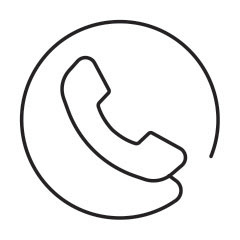Your Care Instructions
Mastitis is an inflammation of the breast. It most often occurs while breastfeeding (sometimes called chestfeeding). But it can happen anytime. Mastitis can be caused by poor milk flow from the breast. When milk builds up in a breast, it can cause swelling and inflammation. Sometimes the tissue can become infected with bacteria. Cracked or irritated nipples can make infection more likely.
Regular breastfeeding, self-care, and sometimes antibiotics are used to treat mastitis. If mastitis is not treated, a pocket of pus may form in the breast and need to be drained.
Follow-up care is a key part of your treatment and safety. Be sure to make and go to all appointments, and call your doctor if you are having problems. It's also a good idea to know your test results and keep a list of the medicines you take.
How can you care for yourself?
- If your doctor or midwife prescribed antibiotics, take them as directed. Do not stop taking them just because you feel better. You need to take the full course of antibiotics.
- If you are breastfeeding, continue to regularly breastfeed when your baby is hungry. These tips may help.
- Breastfeed on both sides. Try to start on the sore side. If you need to start on the other side, be sure to switch and breastfeed from the affected side as well.
- Hand-express a small amount of breast milk before breastfeeding if your breasts are too full with milk. This will make your breasts less full and may make it easier for your baby to latch on to your breast.
- If it's too painful to breastfeed at all, you can pump or express your milk..
- Limit pumping if you can. Try to only pump when you need to. Pumping more than your baby needs may create too much milk and may make mastitis worse.
- Take an over-the-counter pain medicine, such as acetaminophen (Tylenol) or ibuprofen (Advil, Motrin) to relieve pain and fever. Read and follow all instructions on the label.
- Do not take two or more pain medicines at the same time unless the doctor or midwife told you to. Many pain medicines have acetaminophen, which is Tylenol. Too much acetaminophen (Tylenol) can be harmful.
- Try using a cold compress on your breast to reduce pain and swelling. Put ice or a cold pack on the area for 10 to 20 minutes at a time. Put a thin cloth between the ice and your skin.
- Avoid massaging the breast. This can cause tissue injury and worsen swelling.
- Wear a supportive bra that fits.
- Rest as much as possible.
- Drink extra fluids.
- Take care of sore or cracked nipples.
- Let your nipples air dry after feeding. Try letting some breast milk dry on your nipples.
- Avoid using saline soaks or castor oil on your affected breast or sore nipples. Ask your doctor before you use any other products on your breasts.
- Try applying a nonstick first-aid pad to your breast after each feeding.
- Sometimes, a blocked nipple pore, called a milk blister (or bleb) happens. A milk blister looks like a white dot on your nipple that can be painful. If a milk blister is causing you pain, it may help to place a warm, wet washcloth over the blister before breastfeeding or pumping.
When should you call for help?

Call your doctor or midwife now or seek immediate medical care if:
- You have worse symptoms of breast inflammation or infection, such as:
- Increased pain, swelling, warmth, redness, or a color change on your breast.
- Red streaks leading from a breast.
- Pus draining from a breast.
- A fever.
Watch closely for changes in your health, and be sure to contact your doctor or midwife if:
- You do not get better as expected.
- You have trouble with your baby's latch or breastfeeding.
- You feel sad, anxious, or hopeless for more than a few days
Where can you learn more?
Go to http://www.healthwise.net/patientEd
Enter Y207 in the search box to learn more about "Mastitis: Care Instructions".
Current as of: April 30, 2024
Author: Ignite Healthwise, LLC Staff
Clinical Review Board
All Healthwise education is reviewed by a team that includes physicians, nurses, advanced practitioners, registered dieticians, and other healthcare professionals.

